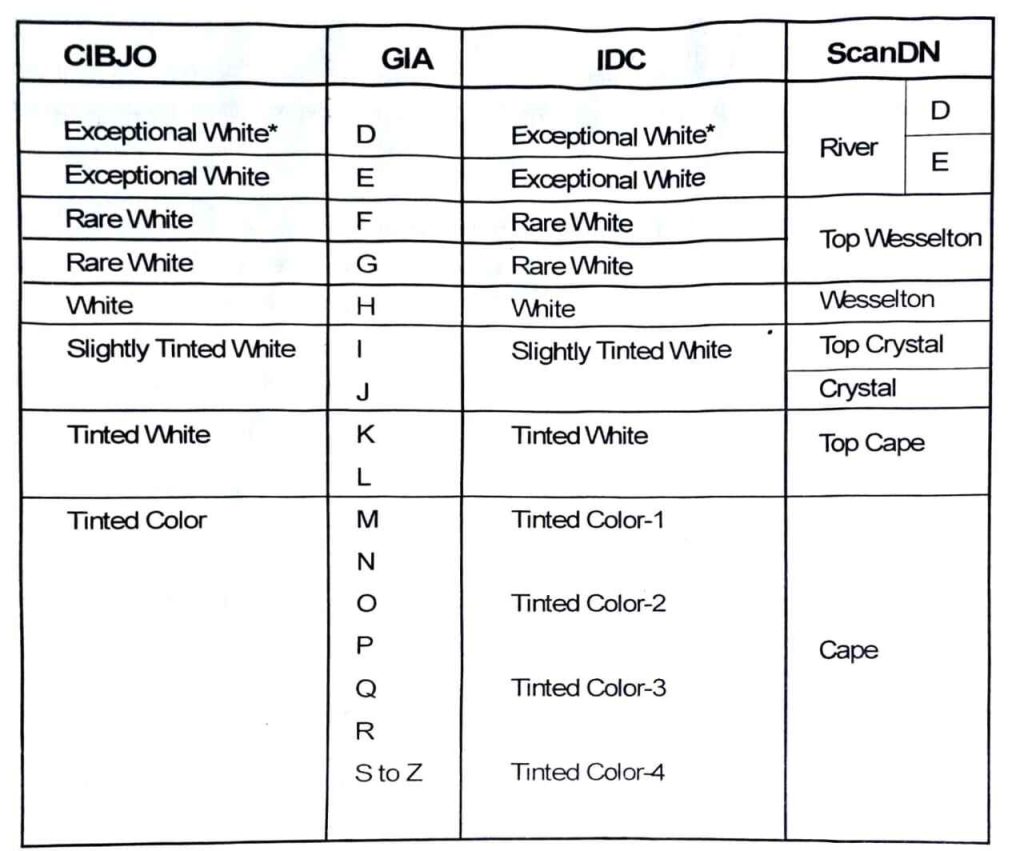diamond grading : The majority of polished diamonds seen today exhibit a particular tint of light yellowTruly colourless diamonds without any trace of color are so rare that they are difficult to obtain and are very highly valued.
Table of Contents
what is diamond grading?
Diamond grading is the process of evaluating the quality and characteristics of a diamond, including its cut, color, clarity, and carat weight. These four factors are commonly referred to as the “Four Cs.” Here’s a brief overview of each factor:
- Cut: The cut of a diamond refers to how well it has been shaped and faceted. A well-cut diamond will sparkle and reflect light brilliantly. The cut is graded on a scale from Excellent to Poor.
- Color: Diamond color refers to the presence of color in a diamond. The Gemological Institute of America (GIA) grades diamond color on a scale from D (colorless, rare, and valuable) to Z (light yellow or brown). The less color a diamond has, the higher its grade and value.
- Clarity: Clarity measures the presence of internal and external flaws, called inclusions and blemishes, respectively. Clarity is graded on a scale from Flawless (no visible flaws under 10x magnification) to Included (flaws visible to the naked eye). The fewer and smaller the flaws, the higher the clarity grade and value of the diamond.
- Carat Weight: Carat weight is a measure of a diamond’s size. One carat is equivalent to 0.2 grams. Larger diamonds are rarer and, all else being equal, more valuable.
In addition to the Four Cs, there are other factors to consider, such as fluorescence (the diamond’s reaction to ultraviolet light) and the overall diamond shape (e.g., round, princess, emerald, etc.). It’s also important to consider the diamond’s certification. Reputable laboratories, such as the GIA, provide detailed grading reports that confirm the diamond’s quality based on the Four Cs.
When purchasing a diamond, it’s essential to consider your budget and personal preferences, as well as educating yourself about these factors to make an informed decision.
polished diamond grading for diamond color
The range of yellowness in the majority of diamonds can be thought of as a progression of color.
This range has been called the ‘Cape Series’ as colorless to yellow diamonds. Diamonds with brownish tint are also encountered it is called the ‘Brown series’. In addition tints of gray and green are seen occasionally.
Standards in color grading: For accurate color grading of a diamond certain requirements are needed these are
A set of master stones.
A suitable light source.
A neutral environment in which to grade.
Experience

Traditionally natural daylight has been to ‘color compare’ diamonds. North light is, therefore, used in the northern hemisphere, and south light is used in the southern hemisphere (south of the equator).
In daylight, UV light is always present which affects the color grading of diamonds. So daylight lamps should be used.
Color Nomenclature
A better system of nomenclature is to use numbers or letters to represent color grades. The G.I.A. has recommended a system of letters from D to Z. In the IDC, and CIBJO systems each color grade is described in a few words. describe the colors.
In the scanning system original terms are used These four systems are in worldwide use.
Color Grading of Mounted Diamonds:
It is not possible accurately to grade mounted diamonds even with the use of master stones. and if the metal of the mount is colored. Most of the stone may affect the color of the diamond yellowish yellow gold that will be drawn into the diamond causing it to appear more yellow than it is.
Similarly, the hues of surrounding colored gemstones in the mount will also be drawn and confuse the eye, e.g. blue sapphire can enhance the appearance of the diamond. Yellow sapphire can make of a lower color grade.
click this article from diamonds pro about diamond color grading.
buy diamonds online with 100% quality assurance. please visit our online store.



